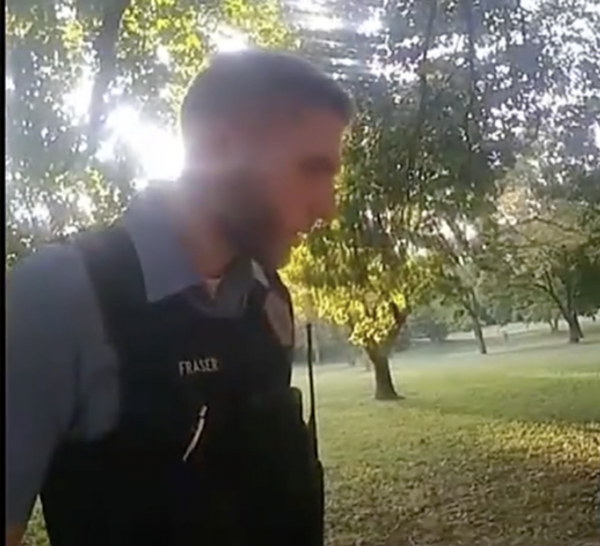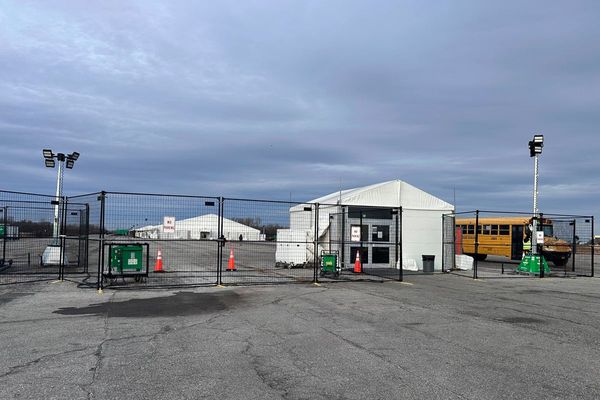
Syria continues to obtain components for its chemical weapons and missile programs, the Trump administration said in a report to Congress this year, as Bashar al-Assad’s regime seeks to restore capabilities eroded by a near-decade-long civil war and successive U.S. airstrikes.
The finding—confirmed to Foreign Policy by current and former U.S. officials, as well as diplomatic sources who spoke on condition of anonymity—comes as current and former Trump administration officials worry that a potential buildup of missile production facilities inside Syria could threaten Israel.
“Despite having completed destruction of Syria’s declared [chemical weapons] production facilities and stockpile of [chemical weapons] agent, the Assad regime continues to pursue chemical weapons and has used both chlorine and sarin on a number of occasions over the course of the conflict,” the State Department reported to Congress this year in a document obtained by Foreign Policy. “We believe the Assad regime is seeking to reestablish strategic weapons production capabilities it lost in the course of the conflict and we continue to see Syrian procurement activity in support of its chemical weapons and missile programs.”
In a U.N. Security Council meeting on Monday, Kelly Craft, the U.S. ambassador to the United Nations, accused Syria of breaching its obligation under the Chemical Weapons Convention and U.N. resolutions to dismantle its chemical weapons program. The United States attributes more than 50 instances of chemical weapons use to the Assad regime, mostly launched from aircraft and targeting civilians in residential neighborhoods, markets, and hospitals. Many of the chemical weapons stockpiled by the regime in the face of international arms control treaties are capable of being launched by Syria’s ballistic missiles.
It’s not clear to U.S. officials that Iran would consider transferring ballistic missiles directly to Assad, a move that would significantly extend the range of Damascus’s deadly sarin and chlorine stockpiles. But the Syrian regime’s continued efforts to secure chemical weapons have raised concerns in Washington and Jerusalem.
Collaboration between Iranian proxies and Damascus in weapons production is not unheard of. In the past, the Syrian regime developed an improvised rocket munition to fire chemical weapons based on designs from Hezbollah, and Janes Defence Weekly has reported on Iran previously aiding in the growth of Syria’s surface-to-surface missile program.
In the report to Congress obtained by Foreign Policy, the State Department warned that Iran was also exploiting the Syrian war to build up a coterie of multinational militia forces along border crossing routes and to fly armed drones into nearby Israel. One former Trump administration official said the United States has greenlit Israeli airstrikes inside Syria targeting Iranian efforts to house missile facilities near its border, considered a red line for Israel. Concerns about Iranian missile sites have only grown, officials and diplomatic sources said, as Iran has stepped up efforts to produce precision guidance kits on Syrian soil that can increase the accuracy of short-range missiles fired at Israel.
In the meantime, Assad’s continued effort to rebuild Syria’s chemical weapons production appears significant not only for the human rights implications but also for the threats it would pose to U.S. allies and partners.
“The reemergence of Assad’s offensive chemical weapons program, that would be significant,” said Daryl Kimball, the executive director of the Arms Control Association. “It’s one thing to have barrel bombs dropped from helicopters. It’s another thing entirely to have sarin available for deploying on ballistic missiles that can hit other countries in the region. Those are two very different threats.”
Kimball said it would be difficult for nongovernmental organizations to independently confirm whether Assad was taking steps to rebuild his chemical weapons program. Still, “it would not be surprising if the U.S. intelligence community assessed that the Assad regime was trying to reconstitute some of its previous programs,” he said. “If it does have evidence, it has a responsibility to bring this evidence to the [Organisation for the Prohibition of Chemical Weapons, or OPCW] so it can bring the full weight of the organization and international community to bear on Syria.”
The resilience of Assad’s chemical weapons program appears to fly in the face of optimism from U.S. civilian and military officials after successive U.S.-led missile strikes against air bases and facilities in 2017 and 2018. Then-Joint Chiefs of Staff Director Lt. Gen. Kenneth McKenzie did not rule out the possibility of future chemical weapons attacks by the regime in 2018, though he said the multinational attack that included Britain and France had dealt a “very serious blow” to the heart of Assad’s program. But former officials said the Trump administration had to balance its desire to strike a blow against the Syrian regime with concerns about collateral damage on a crowded battlefield.
“We definitely wanted to do something actual to their capability that wasn’t just symbolic, but we also didn’t want to kill a bunch of Russians,” said a former senior Trump administration official. “It would have depleted their general ability, but we didn’t want to hit a bunch of places that had Iranian and Russian advisors there.”
But even before the strikes, Western intelligence agencies and international weapons inspectors long suspected that Assad hid some stores of chemical weapons after declaring he had eliminated the entire program as part of a pact brokered by the United States and Russia in 2013. Those concerns have been repeatedly reinforced by persistent reports that Syrian forces continue to fire munitions filled with sarin and chlorine at civilian towns in rebel-controlled territory.
As far back as 2016, international chemical weapons experts at the Hague-based OPCW described a troubling pattern of incomplete and inaccurate disclosures about the scale of Syria’s ongoing chemical weapons program, according to a confidential 2016 report that was reviewed by Foreign Policy.
“We, therefore, remain very concerned that [chemical weapons] agent and associated munitions, subject to declaration and destruction, have been illicitly retained by Syria,” said Washington’s then-envoy to the OPCW, Kenneth Ward, at the time.
There have been indications that Syria has sought to reconstitute its chemical weapons program. “The United States has been sanctioning front companies working for the Syrian chemical weapons program since 2013 and 2014—that would indicate ongoing attempts at procurement,” said Gregory Koblentz, a professor at George Mason University.
For instance, France issued a statement in April 2017 claiming that Syrians were trying to acquire stores of isopropanol, a chemical precursor used in the production of sarin. The OPCW also said it had found “major inconsistencies” in Syrian regime explanations for the discovery of traces of sarin in sites that hadn’t been declared to inspectors as weapons facilities.
This year, a U.N. panel of experts monitoring North Korea’s compliance with U.N. sanctions found that Pyongyang had been routinely shipping potentially critical supplies to a Syrian entity—the Scientific Studies and Research Center—that oversaw Syria’s chemical weapons program.
Koblentz said the administration’s reference to a strategic program suggested that Syria may be seeking to expand its chemical weapons threat to deter attacks by regional rivals, particularly Israel. While some U.S. officials believe that the Trump administration’s steady diet of sanctions against Assad has dampened his wherewithal to cause trouble in the region, experts insist that the regime will still look to double down on its chemical weapons arsenal.
“The first thing you always have to say is that the disarmament was incomplete and not just in terms of volumes of agents but what production capacities may have survived,” said Tobias Schneider, a research fellow at the Global Public Policy Institute in Berlin who has conducted several studies of the Assad regime’s chemical weapons program.
“It was the consensus that the program had survived and it was being consolidated on a smaller scale but that it quietly continued,” he said.







